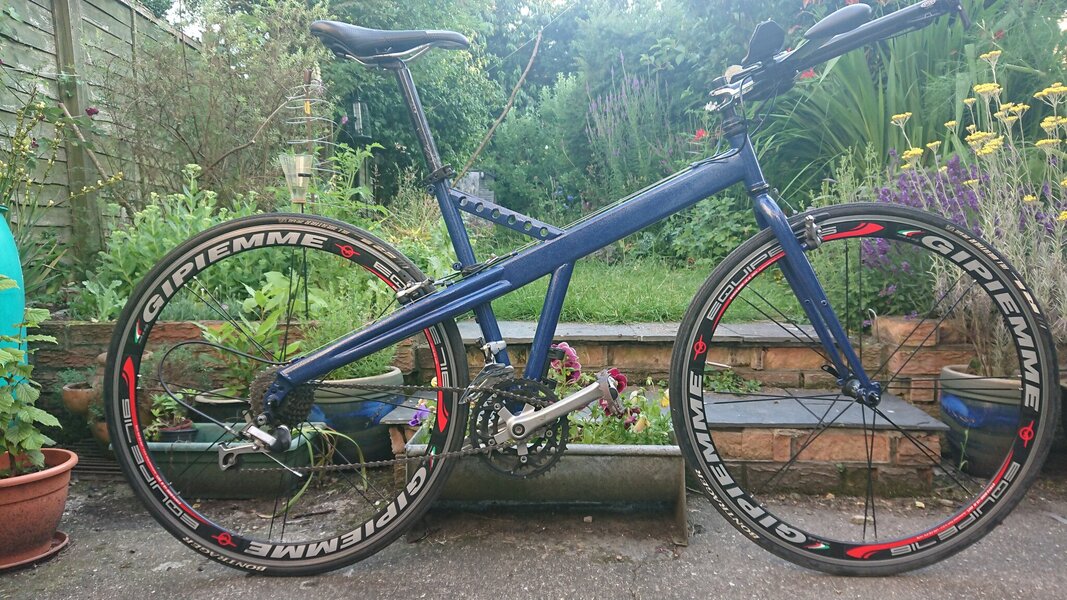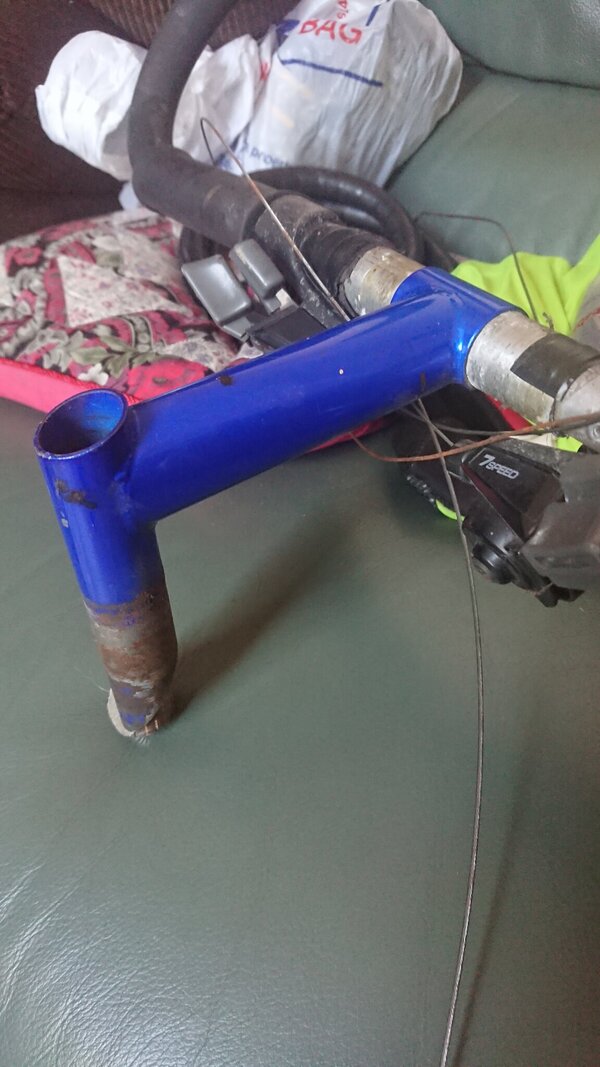Well, no old photographs yet, which is a disappointment, but gradually changing things to test out what is like to ride before a final build direction becomes apparent.
I began by riding it a few times as it is. I doubt I'll have another chance to see what it's like riding a bike with bars this expensive:
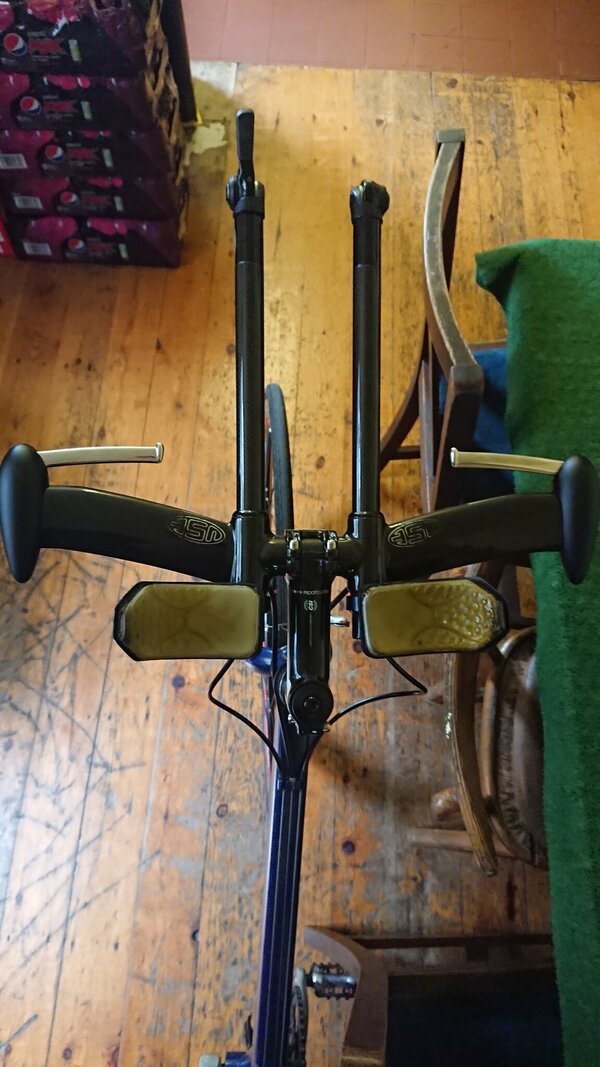
Fortunately, I don't think I could adjust to the aero tuck even if I only ever planned to ride this on the road, so time to remove the aero "wings" and reinstate the original stem.
The first thing that struck me about the original stem is that I really like the clean (impractical

) design, with just a recessed bolt underneath and no faceplate or even a gap for tightening (if I've explained that badly hopefully photos further on will help. The impracticality didn't really bother me - riser bars are definitely not something I ever consider! I had thought bullhorn bars might be good, as I like an alternative hand position and the chance to stretch forward more, given the frame is on the small side for me. However, flat bars and bar ends are equally suitable, especially since I'm not going to be really pushing to use especially lightweight components. I haven't weighed the frame , but it's defnitely not particularly light - however, I do really like how the weight feels distributed.
The first hurdle with the stem, as you may be able to see in the previous photo, is that the previous owner did not think bar ends were the solution! Instead, a pair of lonnnng bullhorn bars have been chopped in the middle and then riveted to a piece of aluminium that sits in the stem. First step, knock out the rivets from one side:
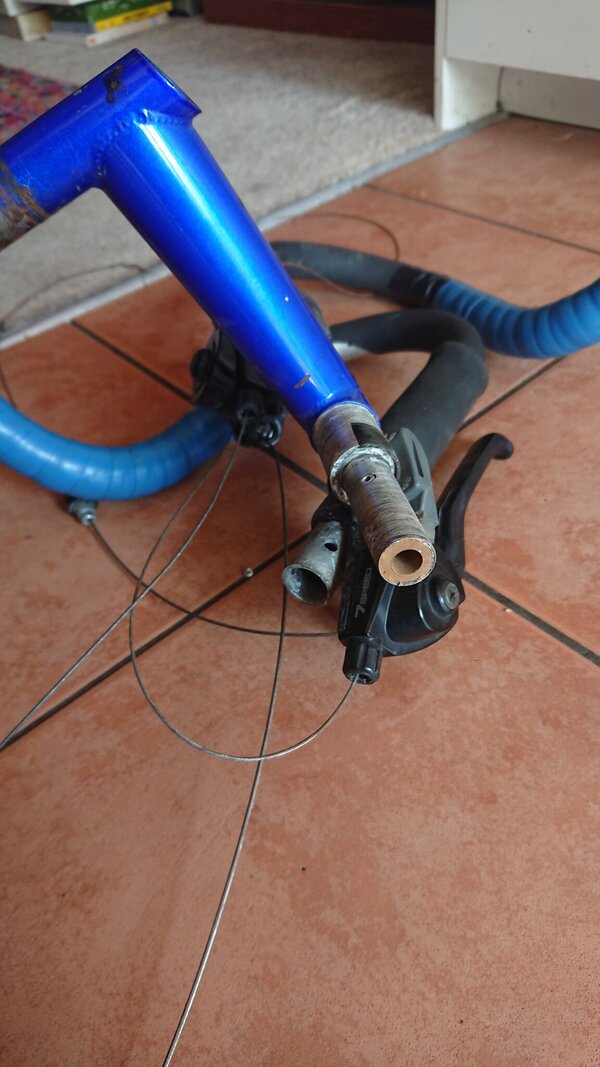
That's a significant piece of aluminium there - they obviously weren't taking any chances with the strength of the middle bit. At this point, I began trying to either move or rotate the bars slightly and it became apparent that this might be a significant job. After treating the aluminium to a nice cuddle from some frozen peas, I tried again with a similar lack of success. Therefore, I took the rivets out and removed the other half of the bar, given it was clear that the extra leverage it gave me was insignificant in comparison with the task at hand. Now I had a lovely stem with a chunk of aluminium sitting in it:
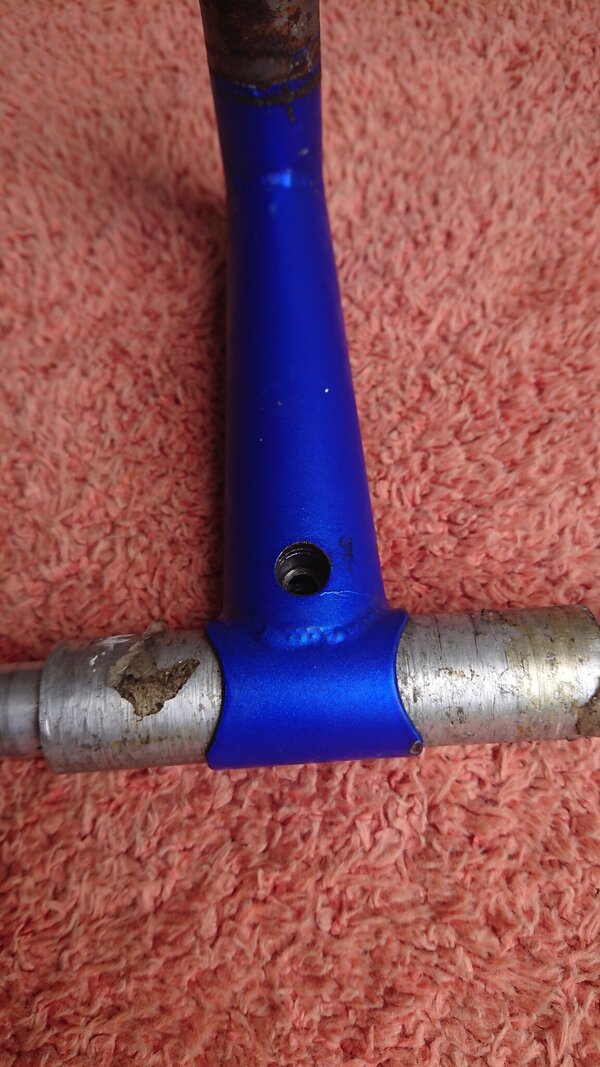
Looking from one end, although as you can see in the previous photo the part where it was rivieted was thick but hollow, the
part clamped into the stem is solid!
First step was to soak in oil, added from both ends and especially through the bolt hole. After a few days, I then tried to tap it out with a hammer. No dice. Making sure the stem was carefully supported to reduce the risk of damaging it, I went for a few more hefty thwacks with the persuasion device, but with no success.
I've made this sound quite short in terms of effort, but I'd already spent quite a long time on it and was getting frustrated. I asked Xavier whether he know whether the internal clamping method of the stem had any alumnium, such as an aluminium wedge ..... my thoughts were turning to just how much sodium hydroxide would be required if I took that route ..... but not for the first time, despite this clearly being the original Sbike stem for this frame, it was different from the previously seen stem designs.
After the periodic application of more oil and profanities produce nothing but a smug lump of aluminium and frustrated hammer-wielder, the caustic option was looking more appealing. However, it struck me that now the bars were removed it should even fit in the rather compact freezer in my mum's house, so into the freezer it went.
After 40 minutes of warm up to ensure my hammer arm was ready to give everything, the stem was taken back out, again very carefully positioned, then treated to a couple of blows of the hammer. Still no movement. By this point, I was thinking that the stem was toast anyway if I couldn't get the aluminium lump out, so I gave it a couple of full power whacks and ..... finally there was some movement! I cannot describe my relief when I looked at the lower half to see a sliver of shiny aluminium above the previosly visible corroded surface! Once I had achieved this initial movement, I knew I could persuade it its time to leave was nigh and therefore used some more considered wallops until it was finally released.
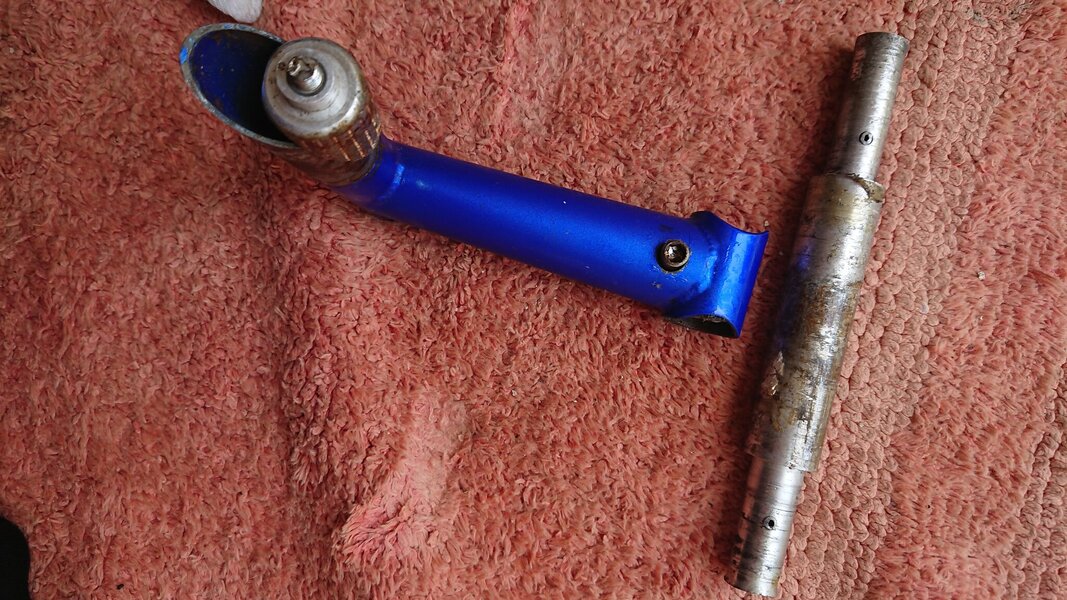
Happiness

The answer to the aluminium wedge question was that there isn't one, the clamping mechanism looks like this:
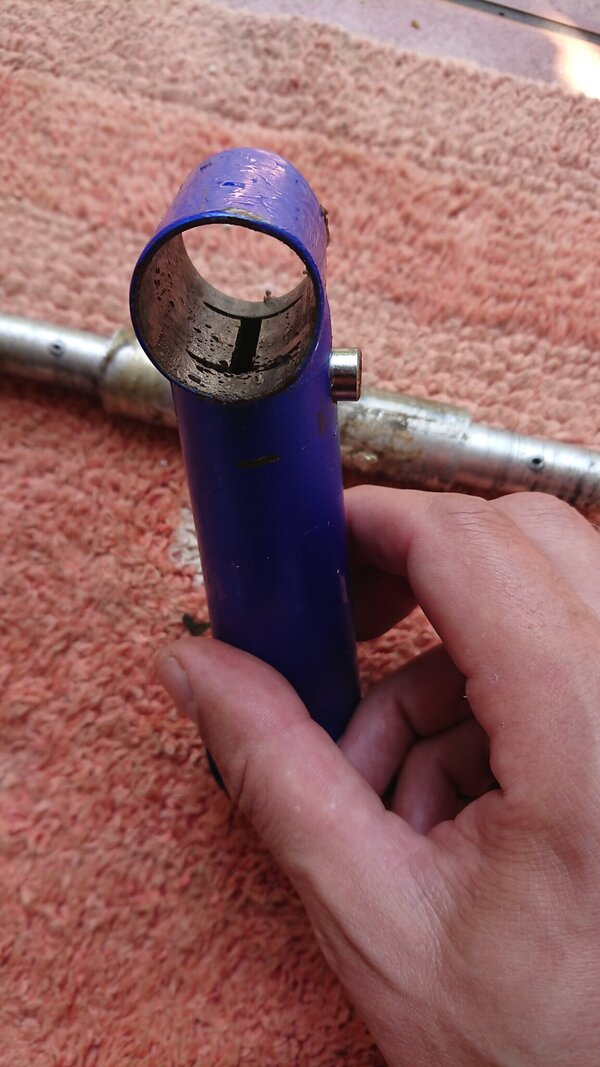
I now gave the stem a bit of a clean up to remove the worst of the rust for the insertion section and check what information I could find:
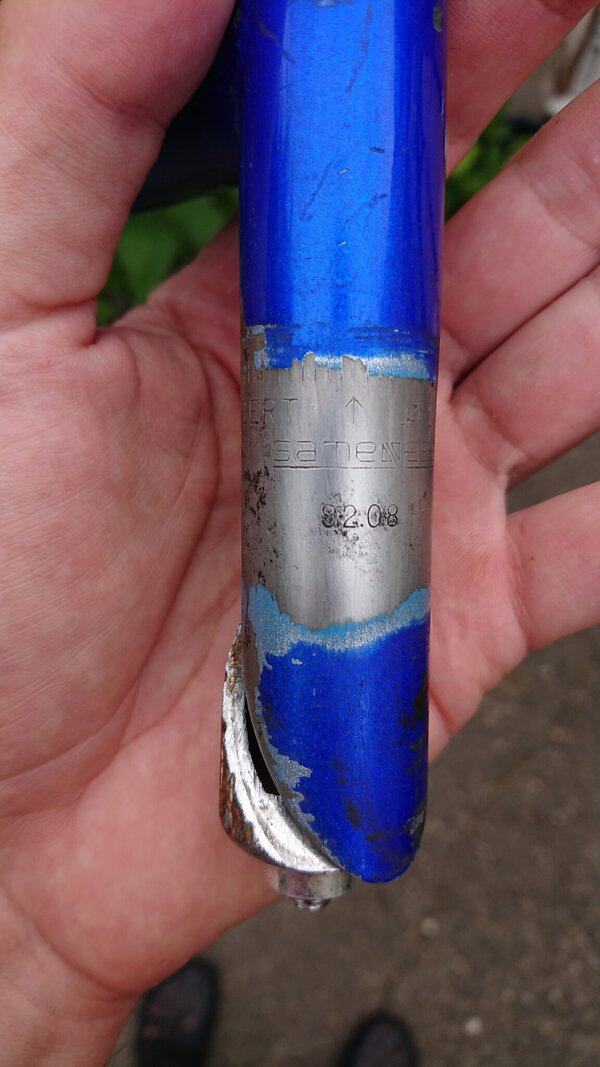
There was plenty of information stamped around it, such as a 'chromo' stamp, along with finding the maker is 'Sameness' (checks out as a company who made stems, bars and bar ends and later moved into exercise bikes) and a date stmp of 92.08, so assuming it was made August 1992 that fits in with the bike being a 1993 model.
Well, I didn't intend to write an entire post just about the stem, but there you have it. I'll still need to find or make something to use as a stem top cap, as the original one didn't come with it.
